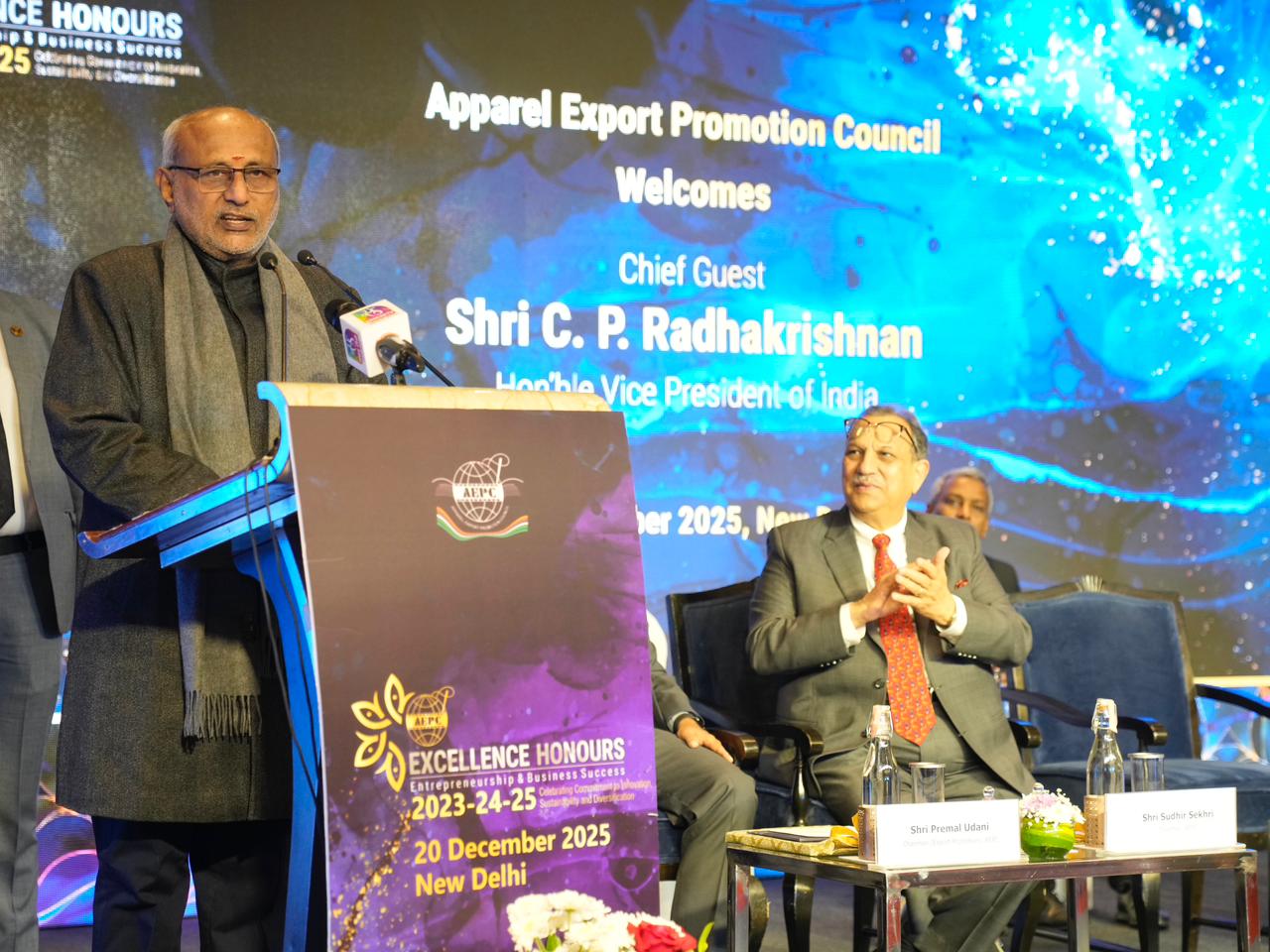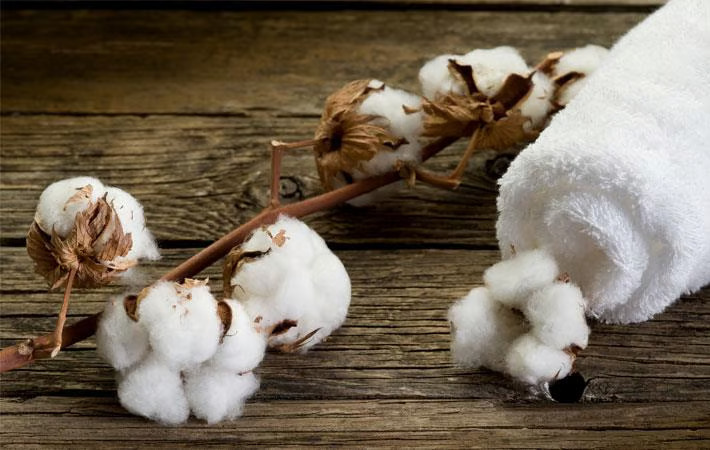FW
India and Turkey are major export destinations for Nepali yarn. Along with rising demand for yarn, Nepali factories have started utilising their capacity towards upper level and have doubled their capacity utilisation from 35 or 40 per cent to 70 or 75 per cent.
Currently there are four spinning mills in Nepal that import raw materials from various countries and they are also trying to create backward linkages to maximise the benefits of yarn export. Around 10,000 people are directly employed in yarn production at present.
The four yarn producers in the country jointly produce almost 40,000 metric tons of yarn a year and production could go up if the factories operate at optimum capacity. Earlier factories were largely running below capacity as the country was facing a crippling power shortage and labor unrest.
Turkey has suspended the generalised system of preferences on export of yarn from Nepal since January on the ground that Chinese yarn is being circumvented to Turkey via Nepal. Nepali exporters who were largely focused on the Indian market are increasingly attracted toward the Turkish market as the latter fetches better prices. The country now fears about the possible adverse impact on jobs and exports of the country due to Turkey’s decision to suspend the GSP facility.
The United Nations Committee on Economic, Social and Cultural Rights has urged Bangladesh to ensure a decent wage for all workers, to revise its labor laws and to make haste with the adoption of a national employment injury scheme. The committee strongly recommended Bangladesh raise its minimum wages to ensure a decent living for all workers and their families and to reduce the gender pay gap.
In labor legislation, the committee says the Labor Act should be revised to ensure that its labor laws cover the whole industry, including the informal economy and export processing zones. The committee has called for independent and effective labor complaint mechanisms and strengthened labor inspection mechanisms and for a revision of procedures and requirement for trade union registration. At the moment, requirements are overly restrictive, while the registration process is arbitrary and rejection rates are high.
The committee recommends that cases of discrimination, harassment, intimidation and dismissal against trade union activists should be promptly and thoroughly investigated and trade union rights should be guaranteed. The perpetrators should be brought to justice and victims provided with adequate remedies. Bangladesh has been urged to speed up its commitment to adopt a national employment injury insurance scheme.
Raw cotton exports from Pakistan in the eight months of current financial year grew by 38 per cent as compared to the corresponding period of last year. Now, the industry wants duties and taxes imposed on polyester yarn to be abolished, enabling the knitwear and sportswear industry to compete with the international market and earn foreign exchange.
For Pakistan, the benefits of renewed GSP Plus status can only be harvested by maximum value addition in finished products rather than exporting only raw materials. Knitwear export industry adds manifold value to basic commodities like raw cotton and yarn.
The GSP window had opened tremendous opportunities by way of inflow of abundant export orders which can only be executed if the liquidity problem of the industry is resolved at the earliest. Liquidity problems prevent exporters from keeping up their export commitment.
Pakistan’s sportswear industry is based on polyester-made garments and now there is a five per cent regulatory duty on imports of polyester yarn and an average seven per cent anti-dumping duty.
The total duty and taxes including anti-dumping on polyester yarn regulatory duty, anti-dumping and other taxes account for 30 per cent. Major manufacturers of polyester yarn in Pakistan do only draw textures yarn.
Pakistan’s textile exports in June 2017 jumped to 23.53 per cent over June 2016. Similarly, textile exports increased by 2.78 per cent in July, 8.55 per cent in August, 12.44 per cent in September, 7.12 per cent in October, 7.45 per cent in November, 10.15 per cent in December, 2.06 per cent in January and 7.14 per cent in February.
The overall increase during July-February has been witnessed as 7.17 per cent. Exporters are being encouraged. Duty drawback of taxes under the export package has helped increase textile exports as export figures have been gradually increasing since June 2017.
The strategy is of facilitating the import of cheaper raw materials and exporting the finished products after adding value. However, the high cost of production is still a hurdle. The textile industry is unable to tap its potential in accordance with its capacity while regional competitors are rapidly multiplying their exports because of the edge they have in the cost of doing business.
Technology upgradation has become the need of the hour. The textile policy has allowed support under the TUF scheme but due to short funding this scheme could not bring fruitful results. Claims are lying unpaid under the technology upgradation fund scheme.
Screen Print India (SPI) will be held in Mumbai from April 20 to 22, 2018. The three day exhibition will display advanced solutions, machinery and services in screen, textile, sublimation and digital printing technologies.
SPI will host over 80 exhibitors from India, Belgium, China, France, Germany, Italy, Japan, Singapore, South Korea, Thailand, Turkey, Taiwan, the USA, and the UK. They will showcase screen printing technologies, textile/garment printing materials, sublimation printing, digital textile printers, wide format digital machinery, consumables and inks.
The screen printing sector has come a long way from just printing visiting cards, letterheads, and invitations to garments, textiles, automotive for auto dials, decals for motorcycles and four wheelers and other commercial uses. Visitors from different sectors like screen printing, garment manufacturers, heat transfer machine suppliers, vinyl suppliers, advertising and design consultancies, banner and billboard manufacturers, commercial printers, fabricators and government planning authorities will benefit from this show.
Since screen printing, digital sublimation, heat transfer and textile printing/garment decoration are undergoing a rapid change, potential business visitors and traders attending the show will get a chance to witness live demos of the latest technologies. Continuing to be a trusted platform for more than 15 editions, SPI 2018 has raised the benchmarks for enhancing awareness, indulge in high-level networking, knowledge dissemination and industry bonding.
Denim brands are offering straightforward sizing for muscular physiques. Keirin Cut’s jeans are roomier in the seat and thigh, with a slightly tapered leg opening and added stretch for comfort. Styles include straight cuts for women and relaxed leg for men. The brand expanded into chinos last year, applying the same generous fit to work appropriate bottoms.
The brand collected measurements from nearly 100 athletes to inform its jean design, and uses real athletes as fit models. Plus, athlete feedback gets incorporated along each step in the process.
Barbell jeans are created to fit the wearer’s actual waist size. Jeans are made with Barbell’s advanced flexible denim and high tensile-strength stitching. Boot cut and slim options are available for women; straight and relax fits are offered for men.
BeBop Society Denim was founded to solve the problem of ill-fitting denim for men with muscular legs and to redefine premium denim by making great fitting jeans accessible to all men. Its jeans are made with selvedge stretch denim and are designed with a generous fit in the seat and thighs for waist sizes 30-38. Heritage details include custom hardware, selvedge pocket detail and seams.
Core Denim caters to fitness-focused women with muscle tone and build in the legs, hips and waist. The brand offers two fabrics and two fits, each with the goal of offering more stretch and recovery than traditional denim.
Italy-based denim mill Candiani has produced Re-Gen Denim. This is a super-selvedge fabric with Tencel Refibra Lyocell that leverages sustainable technologies for a minimized environmental impact.
Re-Gen Denim contains 50 per cent recycled fibers and 50 per cent Tencel Refibra Lyocell, made from post-industrial cotton scraps left over from wood and cutting operations. Refibra Lyocell fibers minimize the need to extract additional raw materials from nature, fostering a more circular economy for textiles and apparel. Yarns woven into Re-Gen Denim are created with regenerated materials instead of virgin cotton.
The fabric leverages Indigo Juice, a dyeing technology designed to conserve water. Indigo Juice maintains a superficial level of indigo on yarn during the denim dyeing process, enabling Re-Gen Denim to work for easy fade, vintage-inspired jeans.
While laundering, Re-Gen Denim requires less chemicals, energy and water to wash down the indigo. Indigo juice allows Candiani to save 15 per cent of energy and 15 per cent of water in the denim dyeing process. To reduce its environmental footprint, Candiani also uses Kitotex, a dyeing technology. Kitotex uses 70 per cent less chemicals, 50 per cent less water and 30 per cent less energy, since it promotes a more sustainable denim dyeing and finishing process by replacing pollutants and other harmful substances.
"Grassroot initiatives and pathbreaking strategies are fuelling US President Trump’s agenda of ‘Made in US’. For instance, American Giant has launched its first new product of 2018 the ‘Roughneck Pant’ for men and probably its most challenging to stay true to its Made in American sourcing strategy. As Bayard Winthrop, CEO, American Giant points out, the company wanted to make a stretch canvas pant that was both utilitarian and looks great. Producing that material and silhouette in the US is a challenge because the machinery isn’t widely available. It forced them to expand manufacturing footprint to Georgia to make the pants the way they wanted. Similarly, last Fall, American Giant introduced its first structured jacket as part of its Work Collection. It was a men’s mechanic jacket made from durable water-resistant canvas."

Grassroot initiatives and pathbreaking strategies are fuelling US President Trump’s agenda of ‘Made in US’. For instance, American Giant has launched its first new product of 2018 the ‘Roughneck Pant’ for men and probably its most challenging to stay true to its Made in American sourcing strategy. As Bayard Winthrop, CEO, American Giant points out, the company wanted to make a stretch canvas pant that was both utilitarian and looks great. Producing that material and silhouette in the US is a challenge because the machinery isn’t widely available. It forced them to expand manufacturing footprint to Georgia to make the pants the way they wanted. Similarly, last Fall, American Giant introduced its first structured jacket as part of its Work Collection. It was a men’s mechanic jacket made from durable water-resistant canvas.

The Roughneck pants are made with fabric milled in Georgia and constructed into a five-pocket, relaxed fit garment in Los also has two company-owned cut-and-sew facilities around Raleigh, Angeles. American Giant NC, which are supported by a Carolinas-based cotton supply chain. Winthrop says it’s a unique approach to product development because it always comes down to supply chain and the company’s deep commitment to its manufacturing partners. The company takes keen interest in knowing the entire value chain from cotton farmers to ginners, yarn spinners and knitters. Proximity to the production process allows the company to get the product right, maintain quality and continue to build on its US manufacturing presence.
As per the National Council of Textile Organizations (NCTO) figures, value of US man-made fibre and filament, textile and apparel shipments increased 4.7 per cent in 2017 to reach $77.9 billion, which is 16 per cent above 2009 levels. Investment in fibre yarn, fabric and other non-apparel textile product manufacturing more than doubled to $2.1 billion in 2016 from $960 million in 2009.
Georgia driving growth
Georgia is the source of a new initiative to promote apparel manufacturing in the state. A new line of ‘Georgia Grown’ T-shirts made with cotton grown locally and T-shirts sewn in the state bowed recently. The project is a partnership with the Georgia Cotton Commission, Georgia Vocational Rehabilitation Agency and Georgia’s cotton farmers. Gary W. Black, Georgia Commissioner of Agriculture, said that with the largest row crop industry in this state being cotton, it is an honour to present 100 per cent cotton shirts grown and sewn in Georgia. The 100 per cent cotton shirts are sourced from South Georgia and ginned at Osceola Cotton Company in Irwin County, Ga. Platinum Sportswear receives the finished fabric and sews the shirts at its facility in Wilkes County. The entire process is completed within a 600-mile radius. Georgia Grown has partnered with local screen printers, including Georgia Industries for the Blind, to complete the design process, the shirts can be customised and feature a 100 per cent Georgia Grown cotton tag.
Nathan Deal, Georgia Governor says with more than $73 billion in economic output each year, agribusiness is the largest industry. An important part of that industry, which is directly tied to this Georgia Grown project, is the cotton sector, as almost 20 per cent of all American cotton comes from Georgia. With this project, the government is recognising the farmers, growers and raisers who are ultimately responsible for so much other business all along the farm-to-consumer supply chain.
Saint Louis
Similarly, Saint Louis Fashion Fund is making efforts to bring the city’s fashion industry and manufacturing back to its roots of a Midwest center of apparel wholesaling. Susan Sherman, co-founder and chair, Saint Louis Fashion Fund, said the fund’s incubator, ongoing search for a high-tech apparel manufacturing facility and request for proposals to transform Washington Avenue and restore its garment district, will help re-ignite the fashion industry in St. Louis. The Incubator is offering a two-year program in business, fashion, merchandising and retail to six designers selected through a national search. Each designer has a studio in the Saint Louis Fashion Incubator and access to shared resources like cut-and-sew capabilities, a reference library, conference and meeting rooms, office equipment, and a small retail boutique to show their lines.
The Saint Louis Fashion Fund is working with Washington University’s Olin School of Business, the Sam Fox School of Design and Visual Arts, and other local and national partners. Sherman informed that there are pockets of apparel manufacturing in St. Louis, but it’s basic sewing like uniforms. The fund has been in touch for networking and collaboration with similar programs in Detroit, Nashville, Minneapolis, Dallas and Chicago.
US apparel and textile imports from China surged 22.2 per cent in February compared to a year earlier. Overall, industry imports increased 12.4 per cent in February, with textile shipments rising 15 per cent year over year, and apparel imports up 9.2 per cent. For the year to February, apparel and textile imports rose 7.1 per cent, with apparel up 4.4 per cent and textiles ahead 9.3 per cent.
The overall US trade deficit in goods and services increased 1.6 per cent in February. The US and China have been volleying huge tariff threats at each other. But China is still by far the top supplier of apparel and textiles to the US.
Among the other top suppliers of apparel and textiles to the US, Cambodia posted a gain of 22.4 per cent. South Korea saw exports to the US increase 17.5 per cent. Among the other top Asian suppliers, Vietnam’s exports rose 5.7 per cent, Bangladesh’s shipments were up 5.1 per cent, Pakistan’s increased 4.1 per cent and Indonesia’s gained 1.7 per cent.
However, India’s shipments fell 0.8 per cent. India happens to be the second largest supplier for the category. Mexico’s shipments increased 4.7 per cent in February while Canada’s shipments rose 4.6 per cent.
TMAS (Textile Machinery Association of Sweden) is now firmly established in Vietnam. With its advanced production technology, innovative solutions and equipment it is helping build Vietnam into a leading textile and garment manufacturer globally.
TMAS provides customers with innovative products including machiney, equipment and solutions to support customers in their production processes. Its member companies are all well-established leaders in various areas of the textile manufacturing process. The companies offer a unique combination of production expertise, textile manufacturing knowledge, and superior products and services.
Vietnam is poised for expansive growth and development and TMAS member companies see the tremendous potential and endless possibilities for adding value to an important local industry. The Vietnamese textile and garment industry has a history that dates back hundreds of years. Today, there are over 6,000 textile and garment manufacturing companies with about 2.5 million employees, making Vietnam the third top garment exporter in the world. The textile industry is shifting over to new technologies and automation from lower end clothing items to high end fashion and top-quality garments.
TMAS has a strong commitment to promoting environmental and social sustainability, whereby smart solutions are of the highest priority. The goal of all member companies is always to achieve better performance and efficiency while maintaining the highest levels of quality.












